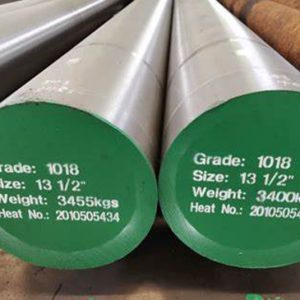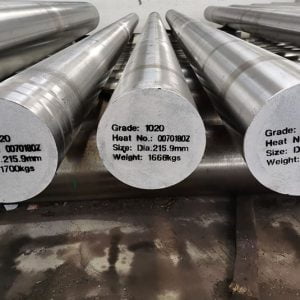Introducción

When it comes to crafting high-quality knives and swords, the choice of material is crucial. Among the various types of steel available, 1080 steel stands out as a favorite among knife and sword makers. This high-carbon steel offers a perfect balance of hardness, toughness, and ease of use, making it an ideal choice for both professionals and hobbyists. In this article, we will explore the properties, benefits, and applications of 1080 steel, and why it has become the preferred material for knife and sword makers.
The Composition and Properties of 1080 Steel
Understanding the chemical composition and properties of 1080 steel is essential for appreciating its suitability for knife and sword making.
Chemical Composition
1080 steel is a high-carbon steel, typically containing:
- Carbono (C): 0.75-0.88%
- Manganeso (Mn): 0.60-0.90%
- Fósforo (P): 0.040% max
- Azufre (S): 0.050% max
Key Properties
- Dureza: The high carbon content allows 1080 steel to achieve significant hardness, making it capable of maintaining a sharp edge.
- Dureza: Despite its hardness, 1080 steel retains good toughness, meaning it is less likely to chip or break under stress.
- Ease of Sharpening: 1080 steel is relatively easy to sharpen compared to other high-carbon steels, which is a significant advantage for both makers and users.
- Edge Retention: It holds an edge well, ensuring that knives and swords remain sharp for longer periods.
Benefits of 1080 Carbon Steel for Knife Makers
Knife makers prefer 1080 carbon steel for several compelling reasons, each contributing to its widespread use.
Excellent Edge Retention
One of the standout features of 1080 carbon steel is its ability to hold an edge. This is particularly important for knife makers who want to produce knives that remain sharp through extensive use.
Ease of Heat Treatment
1080 carbon steel responds well to heat treatment, which is crucial for achieving the desired balance of hardness and toughness. This makes the material more versatile for various types of knives, from everyday carry to specialized hunting knives.
Versatility in Knife Designs
The properties of 1080 carbon steel make it suitable for a wide range of knife designs. Whether crafting a delicate chef’s knife or a rugged outdoor survival knife, 1080 carbon steel can be adapted to meet specific requirements.
Benefits of 1080 Carbon Steel for Sword Makers
Sword makers also favor 1080 carbon steel due to its unique characteristics that make it ideal for crafting high-performance swords.
Durability and Toughness
Swords made from 1080 carbon steel are known for their durability and toughness. The steel’s ability to withstand impact without breaking makes it a preferred choice for combat and practice swords.
Ease of Forging and Shaping
1080 carbon steel is relatively easy to forge and shape, allowing sword makers to create detailed and complex designs. This property is particularly valuable in the creation of historically accurate and aesthetically pleasing swords.
Consistency in Performance
1080 carbon steel offers consistent performance, which is crucial for sword makers who need to produce reliable and high-quality blades. This consistency ensures that each sword meets the maker’s exacting standards.
Comparisons: 1080 Steel vs. Other Steels
To fully appreciate why 1080 steel is preferred, it’s helpful to compare it with other commonly used steels in knife and sword making.
| Steel Type | Dureza | Dureza | Ease of Sharpening | Edge Retention |
|---|---|---|---|---|
| 1080 | High | Good | Easy | Excellent |
| 1095 | Very High | Moderate | Moderate | Very Good |
| 5160 | Moderate | Very Good | Easy | Good |
| D2 | Very High | Low | Difficult | Excellent |
From the table, it is clear that 1080 steel strikes an excellent balance among the various properties, making it a versatile and reliable choice for knife and sword makers.
Heat Treatment Processes for 1080 Steel

Heat treatment is a critical process in maximizing the performance of 1080 steel. Here’s an overview of the steps involved:
Recocido
Annealing 1080 steel involves heating it to a temperature of around 870-910°C and then slowly cooling it. This process softens the steel, making it easier to work with during forging and shaping.
Hardening
To harden 1080 steel, it is heated to approximately 780-820°C and then quenched in oil or water. This rapid cooling increases the hardness of the steel, essential for edge retention.
Templado
After hardening, the steel is tempered to reduce brittleness while maintaining hardness. This is done by heating the steel to a lower temperature, typically between 150-200°C (302-392°F), and then allowing it to cool slowly.
Common Applications of 1080 Carbon Steel
1080 carbon steel is not limited to knives and swords; it has several other applications due to its desirable properties.
Tools and Implements
Many hand tools, such as chisels and axes, are made from 1080 carbon steel. Its hardness and durability make it suitable for tools that require a sharp edge and resistance to wear.
Springs and Automotive Parts
The toughness and resilience of 1080 carbon steel also make it ideal for springs and certain automotive parts, where these properties are critical for performance and longevity.
Conclusión
1080 carbon steel has earned its reputation as the preferred material for knife and sword makers due to its excellent balance of hardness, toughness, and ease of use. Whether you are crafting a high-performance knife or a durable sword, 1080 carbon steel provides the reliability and quality needed to produce exceptional blades. Its versatility and consistent performance make it a top choice for both professionals and hobbyists in the field of blade making.
PREGUNTAS FRECUENTES
Here are some frequently asked questions about 1080 steel to provide further clarity on its properties and uses.
What is the main advantage of using 1080 steel for knives?
The main advantage is its excellent balance of hardness, toughness, and ease of sharpening, making it a versatile choice for various types of knives.
How does 1080 steel compare to stainless steel?
While stainless steel is more resistant to corrosion, 1080 steel offers superior edge retention and ease of sharpening. However, 1080 steel requires more maintenance to prevent rust.
Can beginners use 1080 steel for knife making?
Yes, 1080 steel is a great choice for beginners due to its ease of heat treatment and workability.
What types of knives are best suited for 1080 steel?
1080 steel is well-suited for a wide range of knives, including hunting knives, survival knives, and kitchen knives.
How should I care for a knife made from 1080 steel?
To maintain a 1080 steel knife, keep it clean and dry, regularly sharpen the edge, and apply a light coat of oil to prevent rust.





